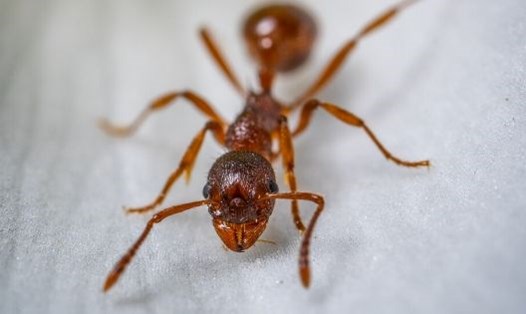On July 25, the first child case was a 2-year-old girl named A.T from Ninh Bình. While playing with her grandparents in their garden, the child suddenly got stung by a swarm of wasps on her head, hands, and back. After being stung, the family quickly took the child to the local hospital for emergency treatment. The child was diagnosed with elevated liver enzymes, rhabdomyolysis, and was transferred to the National Children's Hospital for further treatment. At the Emergency and Poisoning Department, the child was treated for severe rhabdomyolysis and used forced diuresis to prevent acute kidney injury. After 4 days of treatment, the child's health condition has stabilized and was discharged from the hospital.
On the same day, the Emergency and Poisoning Department at the National Children's Hospital also received a child patient H.T (11 years old from Hanoi) who was admitted in a state of anaphylactic shock due to wasp stings.
The child's family reported: While playing soccer with friends in front of their house, the child was suddenly stung by 2 wasps on the back and shoulder area. After being stung, the child developed a red rash all over the body, itching, and after about 10 minutes, the child sweated profusely, fainted, and was taken to the Hanoi East General Hospital in a state of loss of consciousness, not responding to questions, rapid pulse of 130 beats per minute, unmeasurable blood pressure, rapid heartbeat, and SpO2 of 94-96%. At the hospital, the child was treated according to the anaphylactic shock protocol, and after treatment, the child regained consciousness and was transferred to the National Children's Hospital.
Dr. Nguyen Tan Hung, Deputy Head of the Emergency and Poisoning Department at the National Children's Hospital, stated: Wasps belong to two main families, Vespidae (wasps) and Apidae (honey bees). The Vespidae family includes wasps, ground bees, and yellow bees. This group has smooth, non-barbed stingers, which can sting multiple times. The Apidae family includes honey bees, carpenter bees, and bumblebees. This group has barbed stingers, which get stuck in the skin after stinging and die, and each honey bee can only sting once.
Regarding wasps, their venom is a mixture of peptides and inflammatory mediators such as histamine, phospholipase A2, and amino acids, with approximately 40 components that can cause anaphylactic shock, hemolysis, red blood cell lysis, coagulopathy, rhabdomyolysis, acute kidney injury, and other severe symptoms. The severity of the poisoning dose depends on the type of wasp, the number of stings, and the location of the stings. For adults, it is considered severe if they are stung by more than 30 wasps, while for children, it is considered severe if they are stung by more than 10 wasps. If not treated promptly, the victim is at high risk of death.










